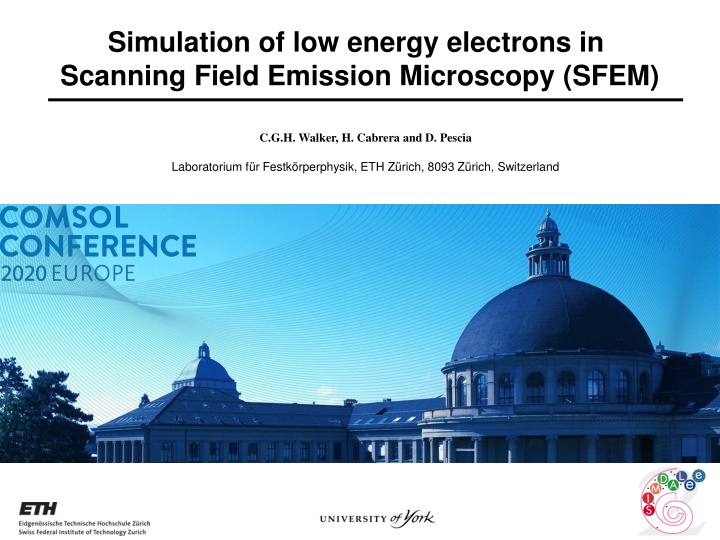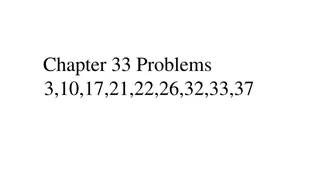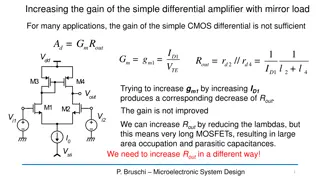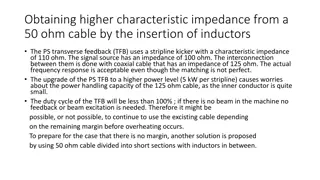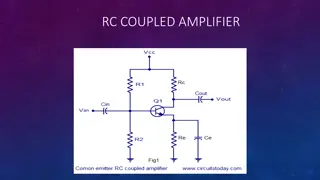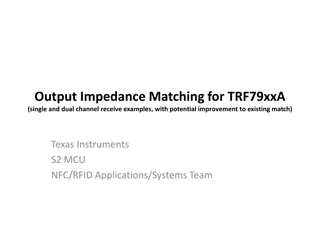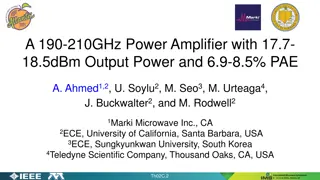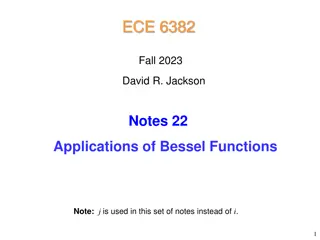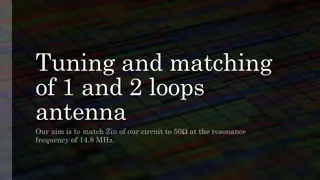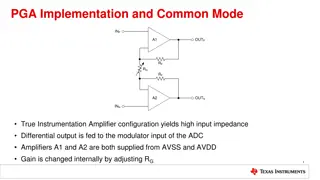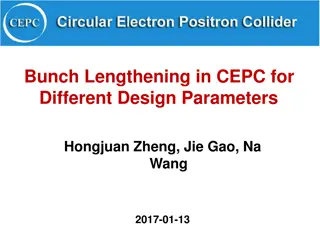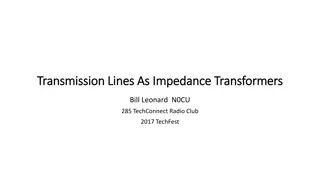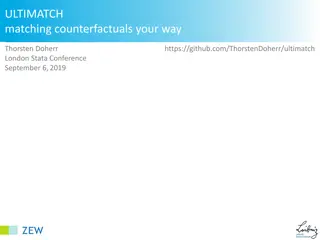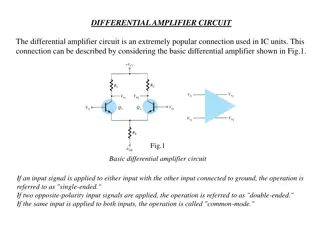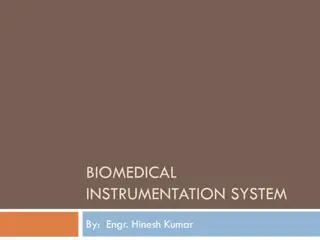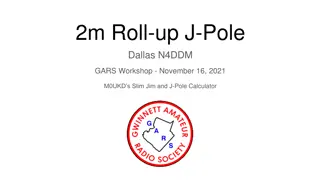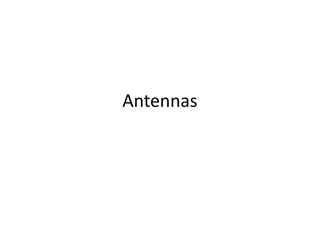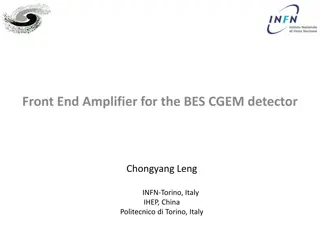Review of Instrumentation Amplifier Impedance Matching
This review covers topics such as impedance matching, power transfer, and responses of difference amplifiers. It also discusses the importance of placing the gain stage close to the input signal for better performance in RF circuit design.
Download Presentation

Please find below an Image/Link to download the presentation.
The content on the website is provided AS IS for your information and personal use only. It may not be sold, licensed, or shared on other websites without obtaining consent from the author.If you encounter any issues during the download, it is possible that the publisher has removed the file from their server.
You are allowed to download the files provided on this website for personal or commercial use, subject to the condition that they are used lawfully. All files are the property of their respective owners.
The content on the website is provided AS IS for your information and personal use only. It may not be sold, licensed, or shared on other websites without obtaining consent from the author.
E N D
Presentation Transcript
Simulation of low energy electrons in Scanning Field Emission Microscopy (SFEM) C.G.H. Walker, H. Cabrera and D. Pescia Laboratorium f r Festk rperphysik, ETH Z rich, 8093 Z rich, Switzerland
WHAT IS SFEM? 10 50 V 10 50 V 10 50 V 2 10 kV 2 10 kV
WHERE IS THE SOURCE OF THE ELECTRONS? Fundamental question: which electrons leave the junction? Fine simulation is needed.
QUANTUM MECHANICAL REFLECTION OF ELECTRONS Some electrons reflect from surface when they encounter the strong ATTRACTIVE force at the surface. But many electrons enter the material. Therefore we still need Monte Carlo simulation.
COMSOL ION RANGE BENCHMARK EXAMPLE Monte Carlo simulation already exists within COMSOL the ion range benchmark model (IRBM). Why not adapt this model for use with low energy electrons ? We need to generate secondary electrons (SE), but the IRBM uses continuous slowing down approximation (CSDA). The IRBM determines a scattering event at each time step, but scattering occurs at random times and is not suitable at low energies.
EXISTING MONTE CARLO MODELS There are many existing Monte Carlo simulation packages available - e.g. CASINO, JMONSEL, PENELOPE, Kieft and Bosch (KB) [1] program using the Geant4 package [2]. Geant4 can also include electric and magnetic fields. Why not adapt KB program to include electric fields ? Electric fields created using COMSOL. This was tried and would be fast, but many software development problems encountered. Image source: Microbeam analysis Scanning electron microscopy Method for evaluating critical dimensions by CD-SEM
USING COMSOL WITH EXTERNAL MONTE CARLO PROGRAM Launch electrons within COMSOL model. Store position and velocities where electrons freeze on the surface (after bouncing). Start Monte Carlo simulation using the particle locations and velocities from COMSOL. If any particles return to the surface, store positions and velocities and pass back to COMSOL. Keep looping until all electrons have lost too much energy or reach the edge of the simulation volume. The trajectories from each COMSOL and Monte carlo run are stored seperately and need to be reconstructed to view entire trajectories. This issue is being addressed with a new feature in the COMSOL Geometric Optics module.
USING COMSOL WITH EXTERNAL MONTE CARLO PROGRAM: ADVANTAGES AND DISADVANTAGES Advantages: Simply adapt existing COMSOL and Monte Carlo models, could be used with a variety of Monte Carlo models, flexible and easily adaptable to other COMSOL models. Disadvantages: Slow. Storing data in files and passing data between the programs means we cannot simulate so many electron trajectories. Cannot be used if the electric field exists within the material (e.g. semiconductors or insulators).
CONCLUSIONS A model of the SFEM had been built using COMSOL for simulating electron trajectories in the vacuum and using a Geant4 based Monte Carlo model for simulating electron trajectories in the substrate. The model operates by running each simulation model in turn until all electrons have lost sufficient energy such that they cannot be detected. The electron trajectories from COMSOL and Monte Carlo simulations are stored in separate files. In order to view the trajectories, a new feature from the COMSOL Geometric Optics model will be used.
ACKNOWLEDGEMENTS We would like to thank : The Team of COMSOL Switzerland and COMSOL Support for their assistance in helping to build the simulation model and the visualisation. Urs Ramsperger, Ann-Katrin Thamm and Maksym Demidenko, Steve Tear, Andrew Pratt and Mohamed El Gomati for useful discussions. Financial support by the FP7 People: Marie-Curie Actions Initial Training Network (ITN) SIMDALEE2 (Grant No. PITN 606988) is gratefully acknowledged.
